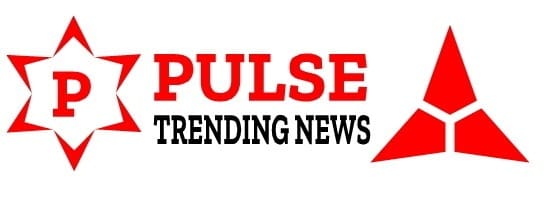Interest Rates
Interest rates are the cost of borrowing money. Lenders with lower interest rates can save you a significant amount of money over the life of the loan. Use the table below to compare interest rates for different types of loans:
| Loan Type | Average Interest Rate | Typical Range |
| Personal Loans | 7% – 9% | 6% – 36% |
| Home Loans (Mortgage) | 3.5% – 4.5% | 2.5% – 6.5% |
| Student Loans | 4.5% – 7% | 3.7% – 12% |
| Auto Loans | 4% – 7% | 3% – 15% |
| Payday Loans | 300% – 500% | 300% – 1000% |
| Business Loans | 7% – 12% | 6% – 25% |
| Credit Card Loans | 20% – 25% | 18% – 30% |
Fees
Lenders may charge various fees, such as origination fees, application fees, and prepayment penalties. These fees can add to the total cost of your loan, so it’s important to understand them before making a decision.
Repayment Terms
Repayment terms, including the loan term and monthly payments, can vary widely. Choose a loan with terms that fit your budget and financial goals. A longer loan term may lower your monthly payments but increase the total interest you pay.
Customer Service
Good customer service can make a big difference when you have questions or need assistance. Look for lenders with a reputation for providing excellent customer service.
Online Application Process
Convenience is key when applying for a loan. Many lenders offer online application processes, which can save you time and effort. Ensure the lender’s website is user-friendly and secure.
Borrower Reviews
Read reviews from other borrowers to get an idea of their experiences with the lender. This can provide valuable insights into the lender’s reliability and customer satisfaction.
How to Apply for a Loan and What Documents Are Required
Pre-Application Steps
- Check Your Credit Score: Obtain a free credit report to check for any inaccuracies and improve your credit score if necessary.
- Gather Financial Documents: Collect documents such as pay stubs, tax returns, and bank statements to demonstrate your financial stability.
- Research Lenders: Compare different lenders to find the best rates and terms for your needs.
Application Process
- Complete the Application: Fill out the loan application form, providing accurate and complete information.
- Submit Required Documents: Attach the necessary documents, such as proof of income, tax returns, and bank statements.
- Review the Loan Offer: Once your application is processed, review the loan offer to ensure it meets your needs and expectations.
- Sign the Agreement: If you’re satisfied with the terms, sign the loan agreement and proceed with the disbursement of funds.
Required Documents
- Proof of Income: Pay stubs, W-2 forms, or tax returns.
- Bank Statements: To show your financial activity and stability.
- Identification: Driver’s license, passport, or social security card.
- Proof of Address: Utility bills or lease agreements.
- Credit Report: If not automatically provided by the lender.
Tips for Managing Loan Debt and Avoiding Financial Pitfalls
Create a Budget
Creating a budget is essential for managing your loan debt. List your income and expenses, and allocate a portion of your income to your loan payments. This will help you stay on track and avoid falling behind.
Make Timely Payments
Late payments can damage your credit score and lead to additional fees. Set up automatic payments or reminders to ensure you pay on time.
Avoid Borrowing More Than You Need
Only borrow what you absolutely need. Taking out a larger loan than necessary can lead to unnecessary debt and financial stress.
Consider Refinancing
If you find that your interest rate is too high, consider refinancing your loan. Refinancing can lower your interest rate and reduce your monthly payments.
Prioritize High-Interest Debt
If you have multiple loans, prioritize paying off those with the highest interest rates first. This will save you the most money in the long run.
Use a Debt Management Plan
If you’re struggling to manage multiple debts, consider using a debt management plan. These plans can help you consolidate your debts and negotiate better terms with your lenders.
Avoid Payday Loans
Payday loans often come with extremely high interest rates and fees, which can lead to a cycle of debt. Consider other options, such as personal loans or credit cards, if you need quick access to cash.
Alternative Options to Traditional Loans
Crowdfunding
Crowdfunding platforms allow you to raise money from a large number of people, typically through the internet. This can be a viable option for personal or business projects, but it’s important to understand the risks and rewards.
Peer-to-Peer Lending
Peer-to-peer lending platforms connect borrowers directly with individual investors. These loans can offer more flexible terms and lower interest rates compared to traditional loans, but they also come with risks.
Credit Unions
Credit unions are member-owned financial institutions that often offer more favorable loan terms and lower interest rates than traditional banks. Consider joining a credit union if you’re looking for better loan options.
Secured Loans
Secured loans are backed by collateral, such as a car or home. They often have lower interest rates but can put your assets at risk if you default on the loan.
Personal Savings
If possible, consider using your personal savings to cover expenses. This can help you avoid taking on debt and the associated interest and fees.
Government Assistance Programs
Explore government assistance programs that can provide financial support for specific purposes, such as education or home ownership. These programs often offer more favorable terms and can be a better option than traditional loans.
FAQs
What is the most important factor to consider when choosing a loan?
While interest rates are a critical factor, it’s also important to consider the loan term, fees, and your ability to make timely payments. The best loan is one that aligns with your financial goals and budget.
Can I negotiate the terms of my loan?
In some cases, you can negotiate the terms of your loan, especially if you have a good credit score or a strong financial history. Don’t hesitate to ask the lender if they can offer better terms.
What happens if I miss a loan payment?
Missing a loan payment can negatively impact your credit score and result in additional fees. If you’re struggling to make payments, contact your lender to discuss options for deferring or reducing your payments.
How can I improve my credit score before applying for a loan?
To improve your credit score, pay your bills on time, reduce your credit card balances, and check your credit report for any inaccuracies. Consistent, responsible financial behavior can help boost your credit score over time.
What are the risks of payday loans?
Payday loans are known for their high interest rates and fees, which can lead to a cycle of debt. If you’re unable to repay the loan on time, you may end up paying much more than you initially borrowed.
Can I use a personal loan to pay off credit card debt?
Yes, a personal loan can be used to consolidate and pay off credit card debt. This can help you manage your debt more effectively and potentially reduce the total interest you pay.
Are there any hidden fees in loans?
Hidden fees can include origination fees, application fees, and prepayment penalties. Always read the loan agreement carefully to understand all the fees and charges associated with the loan.
Conclusion
Navigating the world of loans can be overwhelming, but with the right information and guidance, you can find the best loan option for your needs. Whether you’re buying a home, financing education, or covering unexpected expenses, consider all your options, assess your financial situation, and make informed decisions. Remember to compare interest rates, fees, and repayment terms, and don’t hesitate to seek help from financial advisors or credit counselors if needed. By taking a proactive and informed approach, you can secure a loan that supports your financial goals and keeps you on track for a secure financial future.
This guide aims to empower you with the knowledge and tools to make informed financial decisions. Whether you’re a first-time homebuyer, a student facing tuition costs, or someone dealing with unexpected expenses, understanding the world of loans is the first step to financial stability.
Disclaimer: The content on this blog is for informational purposes only. Author’s opinions are personal and not endorsed. Efforts are made to provide accurate information, but completeness, accuracy, or reliability are not guaranteed. Author is not liable for any loss or damage resulting from the use of this blog. It is recommended to use information on this blog at your own terms.



